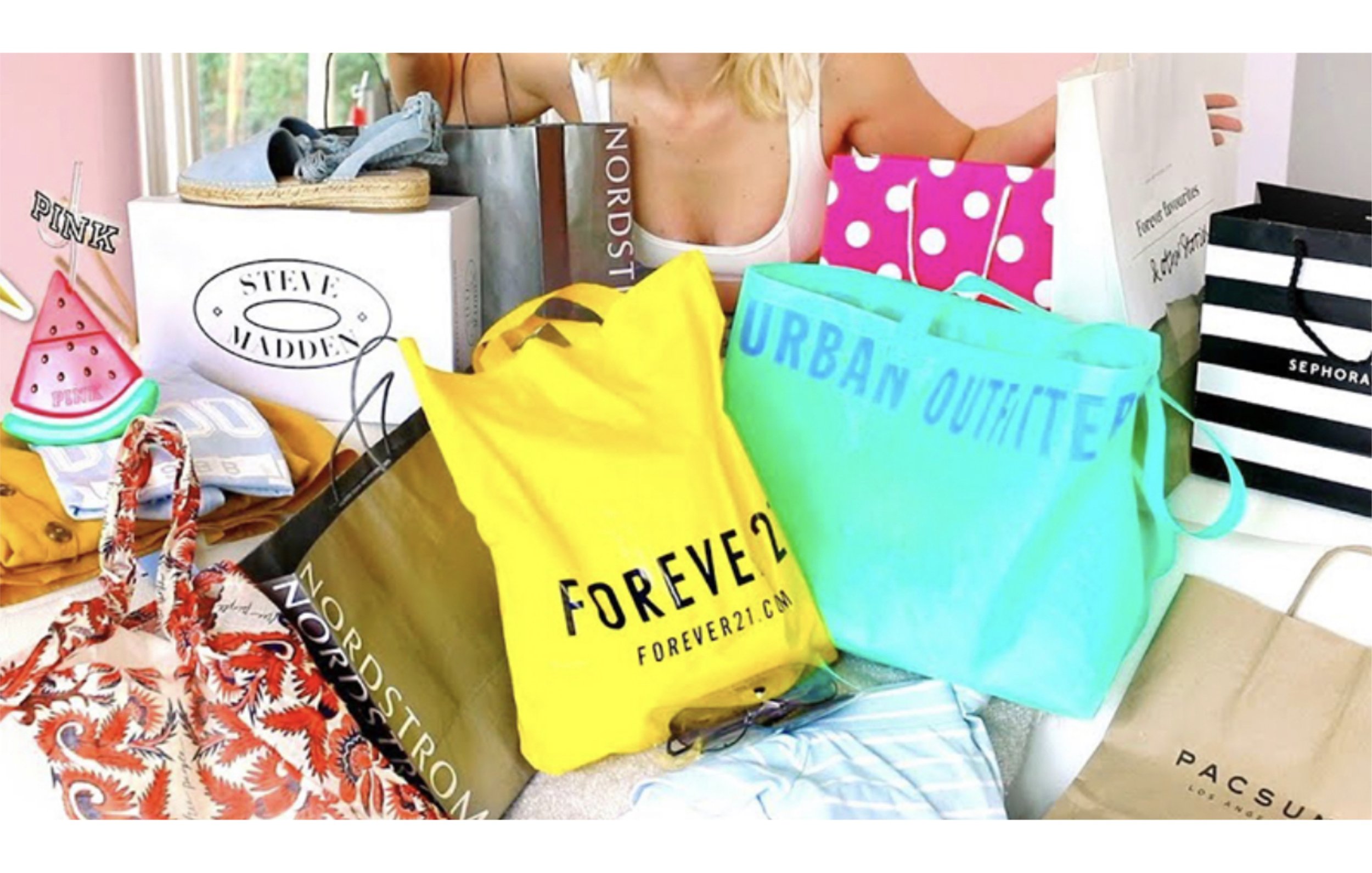The Cons of Clothing Hauls: Sustainability Deep Dive
The holidays are quickly approaching, which means more holiday films, more cozy indoor mood lighting, more cuddling up by the fire, and, of course, more consumerism! One of these things is not like the other — or is it? This year, holiday spending is estimated to rise 3 percent higher than the normal rate during the traditional November and December holiday shopping season. Of course gift-buying and giving has been a long time tradition of the holidays, but what is beginning to become a more common trend around the fall and winter months, especially on social media, are clothing hauls. Clothing hauls are often filmed by influencers and fashion lovers on social media, where they share their large orders from online boutiques or mass-producing clothing companies. Although this phenomenon may seem like it is all in good fun, there are some proven environmental drawbacks to clothing hauls and perpetuating the idea that with the approach of each new season, an entire new wardrobe of clothing is required.
Clothing hauls first gained popularity on Youtube and now live on apps like Tik Tok, where users share their large-scale purchases to inspire others to do the same. Many of these social media savvy shoppers display purchases of 10-20 different new items, and often these hauls focus on clothing from cheap or affordable websites, such as Forever 21, Shein, Zara, etc. Although many of these online creators think they may be helping their followers to score cute looks on a cheap dime, from an environmental standpoint, the ideology that lies behind hauls is quite damaging.
The idea that with each new season — such as the holiday season — comes the “need” for a massive closet reconfiguration promotes overconsumption. This is very detrimental to the environment because much of the clothing that may be purchased in a haul is not designated for long-time use. In fact, a lot of clothing purchased from fast-fashion sites ends up cycling back into the secondhand system. This is not always a bad thing, but it is harmful to circulate the idea that clothing can so easily be worn and then thrown out of our closets when they no longer serve a purpose to us anymore. The best way we can begin to mend the fast-fashion industry and the negative effects of the garment industry as a whole on our planet is to promote a circular use of clothing. We really need to begin to think about the long-term when purchasing clothing, as opposed to frivolously buying pieces just to receive more likes and comments.
As previously stated, a lot of the clothing purchased in internet clothing hauls ends up being donated shortly after its purchase, as buyers may have clicked “Order” on an item just simply because it was cheap. It is commendable to contribute to the secondhand clothing industry, but not all of the fast-fashion items purchased through hauls end up in consignment stores. In fact, each year around $450 billion worth of textiles are thrown away around the world. With clothing hauls becoming the new norm, the odds of this number decreasing in coming years are not optimistic. A large contributor to the amount of clothing ending up in landfills at the end of every year is the fact that many individuals make short-term purchases and tend to prioritize price over quality. Think about it — you can spend around $100 on a haul from Shein and probably receive 10-15 items. That puts each item at a price point of $6-10 — that’s a steal, right? But is it really a “steal” when the real price we are paying is an environmental price?
Instead of mass purchasing items because they are “cheap” or “trendy” at the moment, it is important to inquire why the clothing may be so cheap. Remember that, oftentimes, behind a mild price tag lies a more complicated and ominous production and sourcing process. It is understood that not all consumers have the ability to prioritize quality over affordability. But, if you do have the means to avoid fast-fashion, and especially to avoid opting into it on an excessively large scale, then it is imperative to the health of our planet to try. Don’t let the tide of clothing hauls online sway you to reach for cheaper, poorer quality items just because you can — but instead, try to remember to put thought into every transaction you make. If you still want to practice your own version of clothing hauls, then try visiting a local secondhand shop for new seasonal items, or propose a clothing swap with family or friends. Instead of driving hyperconsumption, we can begin to drive consumerist habits that are more considerate of our environment and the future of our natural systems. Not only will the Earth benefit from improved shopping habits, but your ever-growing closet and your finances will as well.
Article by Kayla Curtis-Evans, Contributing Sustainable Editor PhotoBook Magazine
Tearsheets by Alexa Dyer, Graphic Design Intern, PhotoBook Magazine






